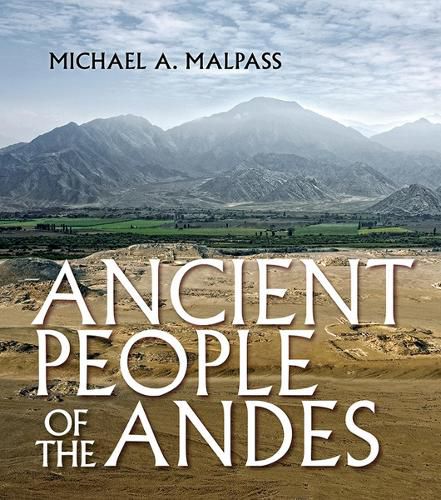Readings Newsletter
Become a Readings Member to make your shopping experience even easier.
Sign in or sign up for free!
You’re not far away from qualifying for FREE standard shipping within Australia
You’ve qualified for FREE standard shipping within Australia
The cart is loading…






In Ancient People of the Andes, Michael A. Malpass describes the prehistory of western South America from initial colonization to the Spanish Conquest. All the major cultures of this region, from the Moche to the Inkas, receive thoughtful treatment, from their emergence to their demise or evolution. No South American culture that lived prior to the arrival of Europeans developed a writing system, making archaeology the only way we know about most of the prehispanic societies of the Andes. The earliest Spaniards on the continent provided first-person accounts of the latest of those societies, and, as descendants of the Inkas became literate, they too became a source of information. Both ethnohistory and archaeology have limitations in what they can tell us, but when we are able to use them together they are complementary ways to access knowledge of these fascinating cultures. Malpass focuses on large anthropological themes: why people settled down into agricultural communities, the origins of social inequalities, and the evolution of sociopolitical complexity. Ample illustrations, including eight color plates, visually document sites, societies, and cultural features. Introductory chapters cover archaeological concepts, dating issues, and the region’s climate. The subsequent chapters, divided by time period, allow the reader to track changes in specific cultures over time.
$9.00 standard shipping within Australia
FREE standard shipping within Australia for orders over $100.00
Express & International shipping calculated at checkout
In Ancient People of the Andes, Michael A. Malpass describes the prehistory of western South America from initial colonization to the Spanish Conquest. All the major cultures of this region, from the Moche to the Inkas, receive thoughtful treatment, from their emergence to their demise or evolution. No South American culture that lived prior to the arrival of Europeans developed a writing system, making archaeology the only way we know about most of the prehispanic societies of the Andes. The earliest Spaniards on the continent provided first-person accounts of the latest of those societies, and, as descendants of the Inkas became literate, they too became a source of information. Both ethnohistory and archaeology have limitations in what they can tell us, but when we are able to use them together they are complementary ways to access knowledge of these fascinating cultures. Malpass focuses on large anthropological themes: why people settled down into agricultural communities, the origins of social inequalities, and the evolution of sociopolitical complexity. Ample illustrations, including eight color plates, visually document sites, societies, and cultural features. Introductory chapters cover archaeological concepts, dating issues, and the region’s climate. The subsequent chapters, divided by time period, allow the reader to track changes in specific cultures over time.